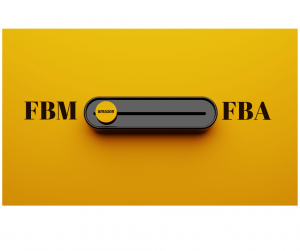 After months of work and research, you found the perfect product and you’re ready to start selling on Amazon. However, for new sellers with products that aren’t already in the catalog, listing on Amazon can be frustrating and dumbfounding at times.
After months of work and research, you found the perfect product and you’re ready to start selling on Amazon. However, for new sellers with products that aren’t already in the catalog, listing on Amazon can be frustrating and dumbfounding at times.
Not to worry, we’re here to help. Here’s a list of some common questions new sellers have asked us.
1. How do I list my product? Do I use an inventory template or the in-built Amazon wizard?
We know – the Amazon templates might not be the friendliest option out there, especially when you’re not selling a large array of products.
It’s sometimes hard to follow, since some templates haven’t been updated in a while and the instructions you‘re given don’t mirror the fields in the actual template. Additionally, you can’t see what you might have filled in wrong until after you’ve finished your work and tested the file.
The wizard seems to contain all the required fields people need to create a good, compliant listing on Amazon. Also, it tells you in real-time when you’ve made a mistake that needs fixing.
However, many people don’t know that the templates and the wizard are not created equal. That’s unfortunate, because using one over the other might make a difference in Amazon compliance.
If you’re trying to list a product that should have variations, and you’re thinking about using the wizard, make sure that it has the Variation-Theme available. If not, you’ll have to use the inventory file to create a compliant listing on Amazon. Luckily, Amazon is slowly fixing the discrepancies between the wizard and the files.
2. My products have variations. Should I list them as individual products?
Let’s say you’re selling a dress that comes in multiple sizes and colors. What’s the best way to list it?
One common dilemma that new sellers have is whether to create one page, and have all this information in one place, or create individual listings for each variation. This might seem like a tough decision to make, since there are people who claim that the latter option has the potential of generating more sales than the former.
Amazon advises against misusing the variation relationships and you might end up with all your listings merged either way. If you get reviews on a variation that sells well, it may ensure visibility for your other existing or future variations, because the reviews section is common to all the variations.
3. The category my product falls under is competitive or gated. Should I choose a different one?
One piece of bad advice that new sellers sometimes receive is that in order to get around the “ungating” issue they should list their products in a different category that isn’t gated Selling certain products and bran… More. We strongly advise sellers against this practice.
Amazon doesn’t take these transgressions lightly. Violating the policy could result in the suspension of your listing on Amazon. At the very least, you’d be asked to go through the same ungatingPlease see “Gated” process that you were trying to avoid in the first place.
4. Can I use other brand names in my hidden keywords?
No, no, and no! Experienced sellers know that you cannot use brand names in titles or bullet points. Some of the newer sellers we work with, in particular, are surprised to hear that search terms are under scrutiny. Amazon sees this as an attempt to manipulate the buyer’s experience, and sellers who use this method are at risk of receiving intellectual property A collection of ideas, concepts, … More rights complaints that are tough to fight.
We hope that this post has answered some of the questions you might have had when embarked on the product listing adventure. If you need more information or you’d like us to guide you through the process, we’re always at your service.

Irina is part of the Business Development Team at SellerEngine Software. She’s an expert in bringing back to life Amazon Selling Accounts. Her motto is: everything will be alright in the end, and if it’s not alright, then it’s not the end.





